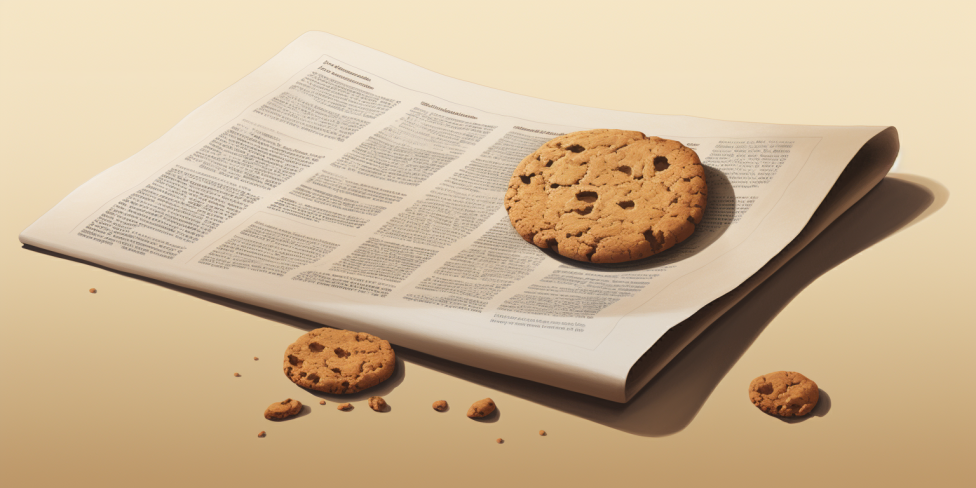It was roughly this time last year that the first AI-generated images from the new wave of AI tools like Midjourney and DALL-E 2 started hitting all of our social feeds. At that point the text-based tools like ChatGPT, Bing Chat, and Bard were still over half a year off from being released to the public. But despite their nascency, these tools are rapidly evolving beyond just being quirky curiosities, as businesses in every industry try to figure out how to apply them to their day-to-day work.
In this piece Richard Wilson, co-founder and CEO of AI-driven production workflow tool CLICKON, discusses examples of how AI is already being used in advertising, and where we’re likely to see it applied in the near future.
We’re seeing huge disrupting trends in the digital marketing space. Consumption of content has never been so prolific and Artificial Intelligence (AI) is heading where humans can’t.
AI-powered solutions are being used across different aspects of advertising, from creative development to asset creation at scale. This is changing the way businesses approach advertising, providing a range of solutions that were once thought to be impossible.
The advertising industry has always been characterised by creativity, storytelling, and engaging with the audience. However, in recent years, AI has transformed the way brands, publishers, and TV producers create, distribute, and monetize content. This technology has brought about a significant shift in the way content is created and delivered to consumers, notably in creative, content, and TV/video ad production.
Creative
It is no secret that the creative process, especially video, has been historically time-consuming and expensive. AI begins to make it possible to automate many of the more mundane tasks, such as basic scriptwriting and storyboarding. For more mass-reach content it is streamlining post production, versioning and transcreation. AI-powered tools can analyse vast amounts of data, including audience behavior, preferences, and audience feedback creating an enormously powerful feedback loop.
Over 2.5 quintillion bytes of content data is produced every single day, which shows the opportunity for AI to streamline huge elements of manual work in the industry. Adobe and numerous other startups are busy in this space analysing vast sets of data, in order to generate different versions of an ad that cater to different audiences.
The idea of personalisation at scale isn’t new. Back in 2011, Coca-Cola utilised AI to create its “Share a Coke” campaign, where personalised cans and bottles were produced with customer names on them. The company used a machine learning algorithm to analyse thousands of names and determine which ones were most likely to resonate with customers in different regions. The campaign was a huge success, with over 250 million personalised cans and bottles sold globally.
This year, Coca-Cola is encouraging digital creatives around the world to use a first-of-its-kind AI platform to generate original artwork with iconic creative assets from its archives. Built exclusively for Coca-Cola by OpenAI and Bain & Company, ‘Create Real Magic’ is the first platform of its kind to combine the capabilities of GPT-4, which produces human-like text from search engine queries, and DALL-E, which produces images based on text.
Whilst many focus on the negative, AI offers huge benefits to the creative process. From ideation to test scripts and storyboarding – it can take an idea from words to reality in minutes – rapidly accelerating creative processes that might have taken weeks. This not only saves time and resources, but it also frees up creative teams to focus on developing more innovative and compelling ideas. As a result, it’s enhancing creativity in the advertising industry by allowing advertisers to experiment with new ideas and quickly iterate on them to produce effective campaigns.
Content
There are two ends of the spectrum with AI in the content creation process. Long form programming and short form mass reach content.
Let’s start with where AI excels – creating personalised short-form content at scale by utilising huge datasets of information and the ability to rinse, repeat and optimise at scale. With AI-powered tools, it is possible to create content that is highly personalised and engaging, catering to the needs and preferences of the individual consumer. Netflix uses AI to recommend content to its users based on their viewing history and preferences. And after bringing ads to its platform six months ago, it is getting ready to launch more unique features by offering additional targeting by eight content genres, including comedy, action, romance and anime, as well as by first impression, which guarantees a brand will be the first ad shown to a user during a single viewing session.
Moreover, AI-powered tools can help publishers and content creators to identify the most engaging topics and themes for their content. With the vast amounts of data available, AI can analyse the performance of different content topics and provide insights on which ones are most likely to resonate with an audience.
It can also help to accelerate the content creation process, which saves time and valuable resources. A recent campaign we delivered in collaboration with the Tate Modern, to create social edits inspired by Surrealism artists featuring TikTok creators, generated 1.6 million views, 15k likes and 182 comments. CLICKON IQ helped connect the various TikTok stakeholders together and make it easy to get everyone’s comments clearly displayed and viewable by all, without having to resort to trawling through dozens of email chains. It allowed for these social videos to be created at speed, with optimisation and brand safety checks on the fly ensuring that quality was not compromised in any way. All of the assets were distributed across the Tate’s TikTok channels to targeted audiences. It helped engage younger audiences with the exhibition and drove footfall to the Tate Modern gallery.
AI is also being used to create more engaging and interactive content. For example, The Weather Channel uses AI to create personalised weather reports that are tailored to the viewer’s location and preferences. The AI algorithm analyses data from the viewer’s location, weather history, and other factors to create a personalised weather report that is more engaging and informative.
AI tools like Wibbitz and Lumen5 enable brands to automatically generate video ads from text-based content like articles or blog posts. This allows brands to repurpose existing content and create new video ads in a fraction of the time and cost of traditional production methods.
TV & Video Ad Production
On the flip side, for long form video and TV things are slightly more complicated. AI is playing a really interesting role in numerous elements of the creative process which should excite creatives across the board.
For example, AI-powered tools can now assist with scriptwriting, by suggesting dialogues, storylines, and character development based on data-driven insights. On the post production level, editing software can use AI to automatically select the best shots, synchronise audio, and colour grade, thus reducing manual effort and time.
At a production level, AI can be used to generate photorealistic virtual sets, environments, and characters. Machine learning algorithms, like GANs, can create high-quality visuals, reducing the need for physical sets and extensive CGI work. This space is only just getting started. For global series and networks, AI-powered voice synthesis can generate realistic voiceovers and dubbing for characters, making it easier to create content in multiple languages or replace an actor’s voice if needed.
From a post production angle, AI can help streamline the complex delivery process – checking content in real time to ensure it meets local and regional requirements for distribution which vary immensely.
Finally, from a trailer and promotional clip perspective, AI will cross reference most popular scenes from viewing data to create bespoke trailers for target audiences made completely outside of the post-production suite.
Hulu, the American streaming service, uses AI to analyse customer viewing habits and interests to deliver highly targeted ads. The company’s AI-powered tool, Hulu Ad Manager, analyses customer data to create personalised ad campaigns that are more effective in driving customer engagement.
AI is only beginning to show its true benefits to the industry – mainly around increasing efficiency, reducing costs, and enabling new creative possibilities. AI in TV and video production is still in its early stages, but its potential for disruption is immense. While it may never be able to fully replicate the nuances of human storytelling, AI can create highly automated and optimised short-form content at scale, which can drive engagement across social channels.
As AI technology continues to evolve and improve, we can expect to see even more innovations to come. The use of AI is essential for advertisers to stay competitive in a rapidly evolving industry. The key is to use AI in a responsible and ethical manner – it could quickly escalate out of control. I’m excited about the possibilities that AI can bring.





